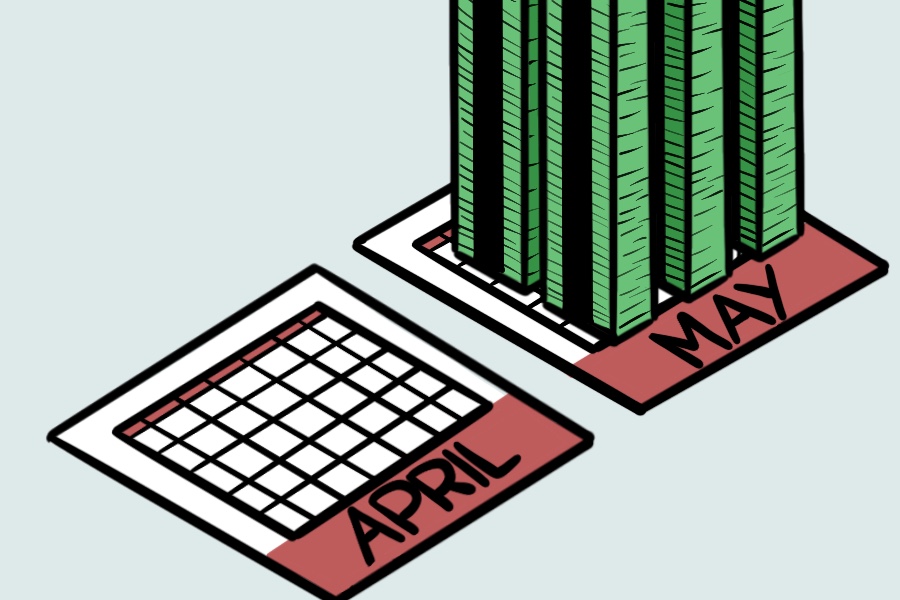Biden offers student loan reform but stops short of full cancelation
The Biden administration extended the pandemic student loan pause until May 1.
March 1, 2022
David Gaines (Bienen ’83, Weinberg ’84) was the principal euphonium player in the Connecticut all-state band before he came to Northwestern to study music and philosophy. He went on to pursue a master’s in music at American University and a Ph.D. in music at Johns Hopkins University.
Gaines took out student loans to pay for his degrees from NU and Johns Hopkins. At NU, he also received financial aid and had a work study job. He said it took about a decade to pay off his undergraduate loans, and he is still paying off the loans from his Ph.D.
As a musician, Gaines said the loans he took were a necessary concession. He now works as a composer and runs a karaoke business.
“This is a big sacrifice,” Gaines said. “Who’s going to say that having to pay off student loans 34 years later when you’re ready to retire is not a big sacrifice? I never thought that was a net minus. It’s just the bargain that I made a long time ago to be what I want to be.”
Gaines is one of thousands of NU alumni and current students who have taken out loans to fund their education. University spokesperson Jon Yates said in an email to The Daily that 28% of Northwestern students take out loans, and the average student in the Class of 2020 graduated with $15,700 in debt. He said NU students graduate with about half the national average in student debt.
“The University meets the full financial need of students without requiring that they borrow,” Yates said. “When students do choose to borrow, they are replacing the expected financial contribution from their family.”
Outstanding student debt in the U.S. totaled more than $1.6 trillion across 43.4 million borrowers in 2021, according to the Federal Office of Student Financial Aid.
President Joe Biden has agreed to tackle the federal student debt crisis during his presidency. Biden expanded student debt forgiveness through targeted programs, but did not cancel all student debt.
The Biden administration has taken a “targeted approach” in addressing student debt and has canceled $16 billion worth of debt for 680,000 borrowers through programs like the borrower defense program, the Public Service Loan Forgiveness program and the disability discharge program. Biden also extended the pandemic repayment pause through May 1.
While the Biden administration has forgiven more student debt than any previous administration, the $16 billion in student loan forgiveness amounts to less than 1% of total student debt in the United States.
Canceling debt from for-profit universities
The Borrower Defense Claims program cancels debt for borrowers who were defrauded by for-profit universities. New findings in investigations of these institutions have led to debt forgiveness for more students who borrowed to attend these universities.
This action will result in nearly 16,000 individuals receiving $415 million in borrower defense to repayment discharges, according to a Feb. 16 news release from the Department of Education. The program existed before Biden’s term, and his administration is working on clearing the extensive backlogs of claims in the system.
Loan forgiveness for public sector workers
The Biden administration has reworked the Public Service Loan Forgiveness program, which forgives student loans for individuals who work in the public sector after 10 years of payments.
Recent changes to the program offer $1.74 billion in forgiveness to 22,000 borrowers and potential forgiveness for 27,000 more individuals if they certify additional periods of employment, according to a Department of Education news release.
Debt forgiveness for borrowers with disabilities
Biden also approved an expansion of disability loan discharges. They forgive debt for borrowers who have a total and permanent disability, according to an Aug. 19, 2021 news release from the Department of Education. The program will benefit more than 323,000 borrowers and grant more than $5.8 billion in forgiveness.
The disability discharge program also already existed before Biden’s presidency. U.S. Secretary of Education Miguel Cardona said expanding this program “removes a major barrier that prevented far too many borrowers with disabilities from receiving the total and permanent disability discharges they are entitled to under the law.”
Pandemic loan pause
Since March 2020, student loan repayments have temporarily paused as a part of the emergency COVID-19 relief plan for student loans. The Biden administration extended the relief plan until May 1.
Gaines said this pause was “fantastic” and helped him during the most challenging parts of the pandemic. He said his karaoke business completely shut down when people were not hosting events due to COVID-19. This pause on loan collections helped borrowers like Gaines weather financial challenges caused by the pandemic.
Next steps
Biden’s $16 billion loan forgiveness has been cause for celebration among borrowers, activists and legislators. Still, many are asking for more sweeping action. During his campaign, Biden pledged $10,000 per borrower in student loan forgiveness and other sweeping student loan cancellations, but he has not yet delivered on those promises.
Gaines said he supports efforts at student loan reform, but above all, he said he hopes universities will take steps to become more affordable. For the 2021-22 school year, NU’s full cost of attendance is $83,838.
“This all starts with the unbelievably high cost of attending college,” Gaines said. “This fundamental issue is the explosive increase year by year in cost — not just tuition — of attending college that has to be addressed.”
Email: catherineodom2024@u.northwestern.edu
Twitter: @catherineeodom
Related Stories:
— Schapiro discusses student debt at Evanston Public Library
— Bill to alleviate Illinois student debt passed by Financial Institutions Committee
— Pritzker grad Sumbul Siddiqui talks Cambridge mayorship, student debt



